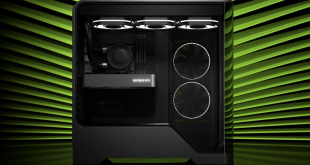
A couple of weeks ago AMD launched their R9 290X GPU which took the market by storm … outperforming both GTX Titan and GTX 780 in the majority of situations. Just ahead of the GTX780 ti release from Nvidia – AMD unleash their more affordable high end partner card, the R9 290. How does this card fare against the other high end solutions available today?
Today we test hardware with a 30 inch Apple Cinema HD display (2,560×1,600) and with our new ASUS PQ321QE Ultra HD 4K Monitor (3,840×2,160) which featured recently in Part 2 of our AMD R9 290X review.

The 4K ASUS PQ321QE panel retails with a whopping £2999.99 asking price , however we would expect this cost to drop in 2014.

Setting up this monitor is simple with both AMD and Nvidia hardware (via DisplayPort cable) and we didn’t experience any issues. To achieve a refresh rate of 60hz after the Forceware or Catalyst drivers were installed we enable the Multi Stream Transport mode within a submenu of the Asus PQ321QE.
This review today will feature comparisons against the fastest R280X card available today – the Sapphire R9 280X Toxic Edition. We also include results from an overclocked Palit GTX770, reference clocked GTX780, a GTX Titan and the class leading MSI GTX780 Lightning – all of which we have reviewed in the past. We also add in results from the AMD R9 290X, so we can analyse the performance differences.
All cards in this review today have been tested using the latest Catalyst and Forceware drivers (13.11 beta8 and 331.65 respectively).

The R9 290 is clocked slower than the R9 290X, from 1ghz to 947mhz. The STREAM processor count has also been reduced, from 2,816 to 2,560. Texture units also get a downgrade, from 176 to 160. Both cards have 4GB of GDDR5 connected via a very wide 512 bit memory interface running at 1,250mhz (5Gbps effective).
The R9 290, along with the R9 290X and R7 260X features a programmable audio pipeline. The R9 270X and R9 280X don’t. This new TrueAudio technology is designed for game audio artists and engineers, so they can ‘bring their artistic vision beyond sound production into the realm of sound processing’. This technology is intended to transform game audio as programmable shaders transformed graphics in the following ways:
- Programmable audio pipeline grants artistic freedom to game audio engineers for sound processing.
- Easy to access through popular audio libraries used by top game developers.
- Fundamentally redefines the nature of a modern PC graphics card.
- Spatialization, reverb, mastering limiters and simultaneous voices are only the beginning.
The R9 290 and R290X also bring bridgeless Crossfire to the table as well.
 KitGuru KitGuru.net – Tech News | Hardware News | Hardware Reviews | IOS | Mobile | Gaming | Graphics Cards
KitGuru KitGuru.net – Tech News | Hardware News | Hardware Reviews | IOS | Mobile | Gaming | Graphics Cards




The price is great, but the cooler is certainly not……. waiting to see modified versions soon
The prices are hard to ignore, and its good to see Nvidia dropping prices lately too, they had been overcharging for quite some time now
I always wondered why they didn’t use a version of the HD7990 cooler. would have made more sense instead of something they probably used on a HD7850
Please, get rid of Furmark. It’s meant to stress GPUs at the max temperature before they are permanentely damaged. Nvidia drivers detect when Furmark is running and throttle their cards, so these results are biased. Measure real world power comsumption and temperature from games that are driven by different types of workloads – Rome: Total War 2, L4D 2, Battlefield 4 and GTA.
Hi Bob, it has never damaged any GPU in the years we have used it. and we only use it to supplement the temperatures from testing games.
I got AMD Radeon R9 290.. and it works great.. All games max graphics.. 😀 Thanks much